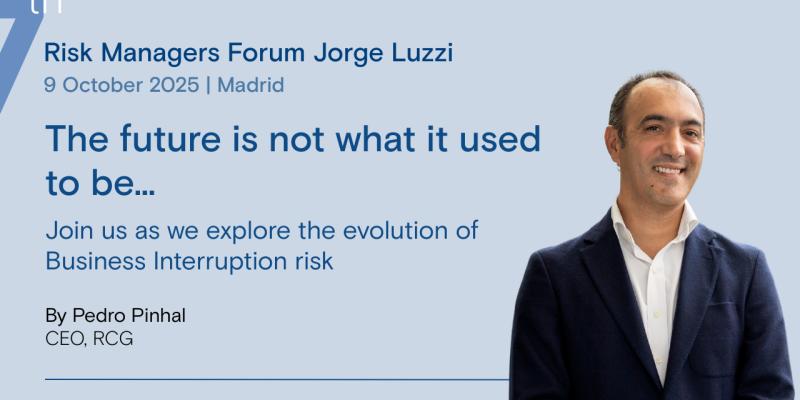The global insurance market continues to expand, with experts predicting a compound annual growth rate (CAGR) of 8.5% up to 2028. In part, this ongoing growth is being fuelled by advances in technology that are playing an increasingly important role in driving industry innovation and meeting the evolving needs of customers.
In this article, I explore my top 4 technology trends to watch in 2023, and how they may impact the industry in years to come.
- Data-Driven Product and Price Innovation, Providing Targeted Insurance Solutions
In today’s data-rich society, data-driven products and price innovations are increasingly prevalent, offering new levels of personalization and value to customers. By leveraging customer data, the insurance industry can offer more personalized products and incentivize customers to reduce their risk, ultimately leading to lower premiums and improved underwriting.
We see evidence of this in health and life products that incorporate smart devices, allowing for hyper-personalized pricing and rewards. And we expect acceptance of data sharing to rise among consumers, as more customers start to experience the financial and auxiliary benefits for themselves.
New sources of data are also powering product innovation. For example, parametric products that offer event-based insurance payouts often leverage satellite data, which bring new levels of insight into catastrophe events.
Advancements in connected devices through the Internet of Things (IoT) is set to bring more data to the table. This will allow insurers to better analyze and develop new customer-centric propositions, paving the way for more personalized insurance products and pricing that truly cater to the needs of individual customers.
- Technology Spread – Moving Beyond Distribution
Technology innovation in the industry is moving beyond distribution and we’re seeing transformation move into other areas of the value chain, from underwriting and supply chain management to risk prevention and claims handling. Often, this is achieved with the use of partner technologies, which bring technical advancement to specialized pockets of the process, such as payments and AI.
Ten years ago, technological innovation in the insurance industry was primarily focused on digital distribution and targeted pricing. We’re now seeing technology play a significant role in transforming other areas of the value chain, from underwriting and supply chain management to risk prevention and claims handling. Often, this is achieved with the use of partner technologies, which bring technical advancement to specialized pockets of the process, such as payments and disbursements.
Blockchain technology is becoming more prevalent in improving security and transparency in insurance transactions, leading to greater trust and efficiency in the industry. This technology also has the potential to streamline claims processing, underwriting and policy issuance as it becomes more mainstream.
In addition, complementary technologies are emerging to transform the way insurers operate. Satellites are used to gather better insights into natural disasters, weather patterns and claims responses, and drones now perform risk assessment in hard-to-reach areas or danger zones. And digital twins, for example, are being used to create virtual models of construction sites and supply chain processes, allowing customers and insurers to identify and mitigate potential risks in advance, and improve the overall accuracy of underwriting. The use of this type of technology looks only set to increase in the years to come.
- Adopting Platform and SaaS Insurtech Solutions to Accelerate Transformation
The adoption of digital insurtech platforms and SaaS solutions is further accelerating the pace of change. These solutions often coexist and integrate with legacy technology, allowing insurers, brokers and MGS’s to quickly gain the advantage of the new technology through a license or subscription fee, without the need for costly and high-risk legacy replacement projects.
By adopting a mixed technology strategy, the market can benefit from taking advantage of best-of-breed solutions, with more predictable technology costs, a lower total cost of ownership (TCO) and a faster path to realizing benefits. And the ability to use multiple vendors across an overall technology stack can also help lower enterprise risk.
Overall, incorporating a platform / SaaS solution into the technology strategy can help improve agility, enabling quick response to changing market conditions, industry trends and customer needs. By leveraging the new Platform and SaaS solutions emerging in the insurtech space, the industry can remain competitive in a rapidly evolving environment.
- The Rising Importance of Ecosystems to Fuel Growth – Powered by APIs
As the insurance industry continues to seek opportunities for growth and enhanced relevance with consumers, partnerships and ecosystems are becoming increasingly important. APIs are the gateway to this growth – allowing expansion into new markets that may have never previously been considered, with access to a broad spectrum of data that enhances the offering to the end consumer. This enables insurance to enter a broader ecosystem, becoming part of more frequent interactions with complimentary brands and services, meaning insurance no longer needs to be treated as a standalone proposition.
McKinsey research suggests that ecosystems could encompass $60 Trillion in revenue by 2023.[1] And many industry executives are now looking at ways to engage with partners, most notably in areas such as mobility, healthcare and the connected home. Brokers are also embracing the partnership model and finding new market opportunities in specialist areas such as extended warranty and other point of sale solutions. We expect this trend to continue as the industry looks to deliver more targeted, customer-centric services in new market segments.
In conclusion, 2023 presents significant opportunities for the insurance industry to transform across the value chain. By embracing these innovations, those in the industry can remain competitive and relevant in an ever-evolving market.





